Consider the situation shown in figure (a). Both the pulleys and the strings are light and all the surface are frictionless. Calculate.
tension in the siring PQ.
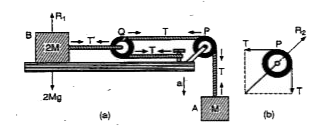
As pulley Q is not fixed, so if.it moves a distance d, the length of siring between P and Q will change be 2d(d from the above and d from below), i.e., M will move 2d. This in turn implies that if is the acceleration of M, the acceleration of Q and of 2 M will be
· Now.if we consider the motion of mass M, it is accelerated downward, so
T = M (g- a) --------- (i)
and for the motion of Q,
and for the motion of mass 2M,
T. = 2M( a/ 2), i.e., T. =Ma-------- (iii)
From Eqns. (ii) and (iii) asMa, so Eqn (i) reduces to
or
So, the acceleration of mass M is g while tension in tl)e siring PQ .from-Eqn. (i) will be,
Similar Questions
Consider the situation shown in figure. Both the pulleys and the strings are light and all the surfaces are frictionless. Calculate
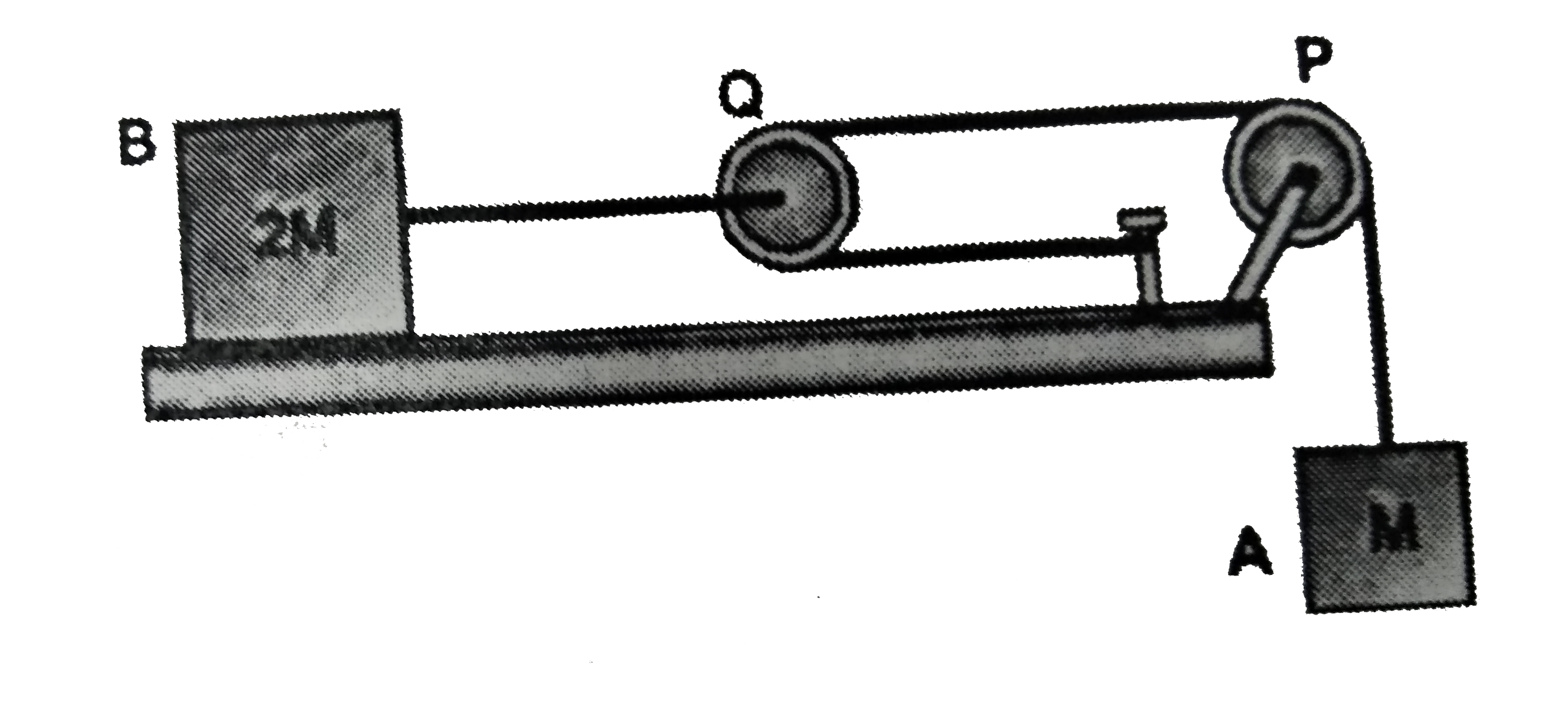
(a) the acceleration of mass M,
(b) tension in the string PQ and
(c ) force exerted by the pulley P.View SolutionConsider the situation shown in figure. Both the pulleys and the strings are light and all the surfaces are frictionless. Calculate

(a) the acceleration of mass M,
(b) tension in the string PQ and
(c ) force exerted by the pulley P.View SolutionIn the situation shown in figure, both the pulleys and the strings are light and all the surfaces are frictionless. The acceleration of mass M, tension in the string PQ and force exerted by the clamp on the pulley, will respectively be -
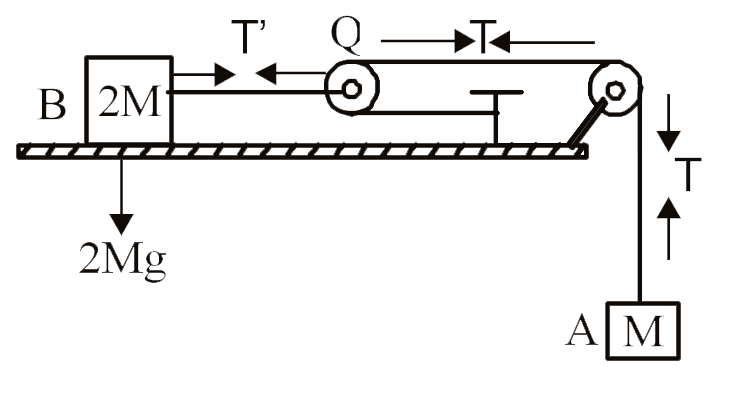 View Solution
View SolutionIn the situation shown in figure, both the pulleys and the strings are light and all the surfaces are frictionless. The acceleration of mass M, tension in the string PQ and force exerted by the clamp on the pulley, will respectively be -
 View Solution
View SolutionConsider4 the situation shown in figure. Bothe the pulleys and the string are light and all the surfaces are friction less. a. Find the acceleration of the mass M. b. Find the tension in the string c. Calculate the force exerted by the clamp on the pulley A in the figure.
 View Solution
View SolutionConsider the system as shown in the figure. The pulley and the string are light and all the surfaces are frictionless. The tension in the string is (g=10m/s2) .
 View Solution
View SolutionConsider the system shown in figure. The pulley and the string are light and all the surface are frictionless. The tension in the string is (Take g=10m/s2)
 View Solution
View SolutionConsider the situation shown in figure .Both the pulleys and the string and light and all the surfaces are smooth.
(a) Find the acceleration of 1kg block.
(b) Find the tension in the string. (g=10m/s2).
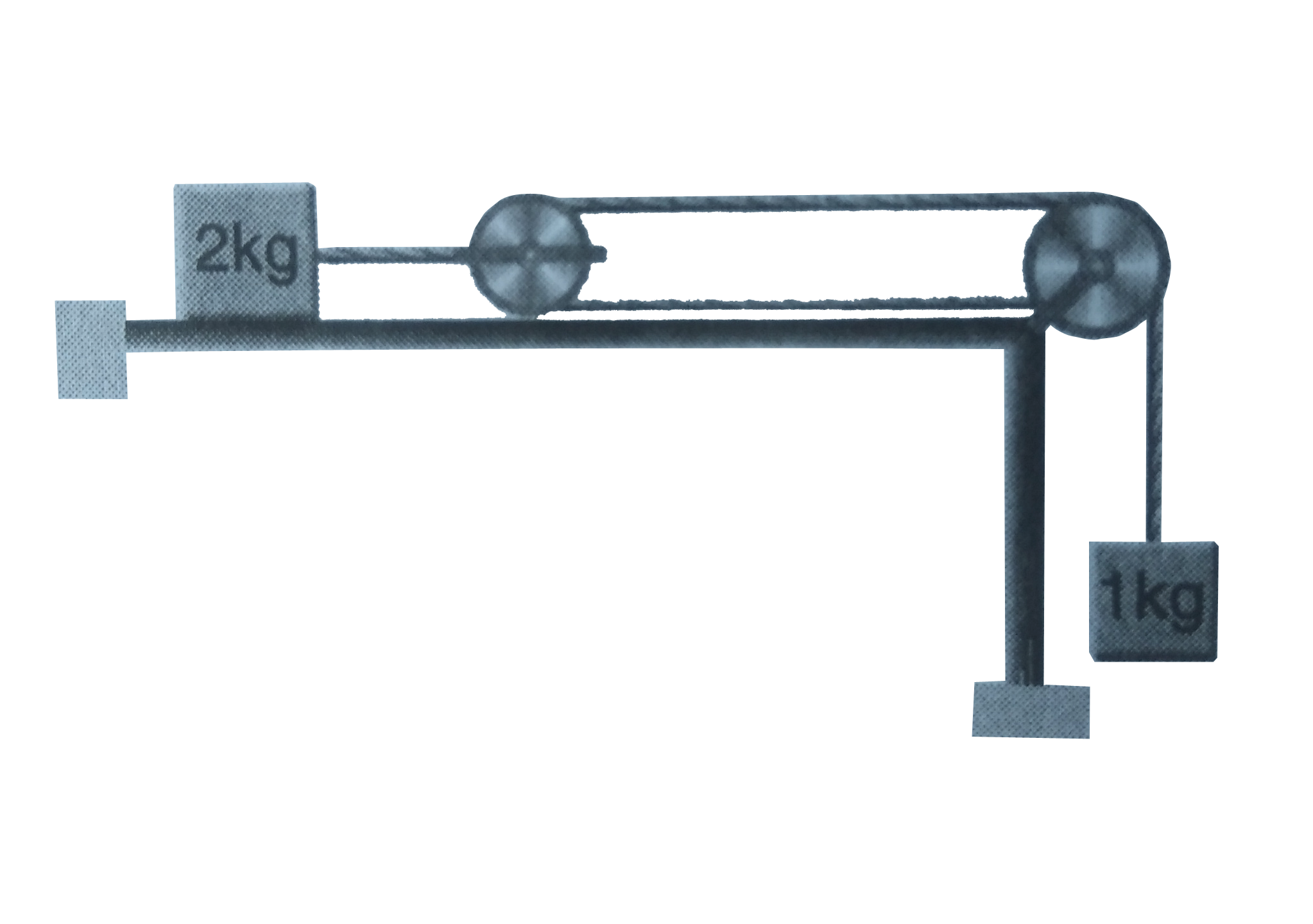 View Solution
View SolutionConsider the situation shown in figure .Both the pulleys and the string and light and all the surfaces are smooth.
(a) Find the acceleration of 1kg block.
(b) Find the tension in the string. (g=10m/s2).
 View Solution
View SolutionCalculate the tension in the string shown in figure. The pulley and the string are light and all surfaces are frictionless. Take g=10 m/s2.
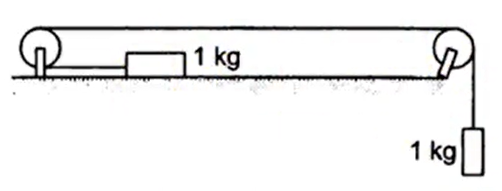 View Solution
View Solution

